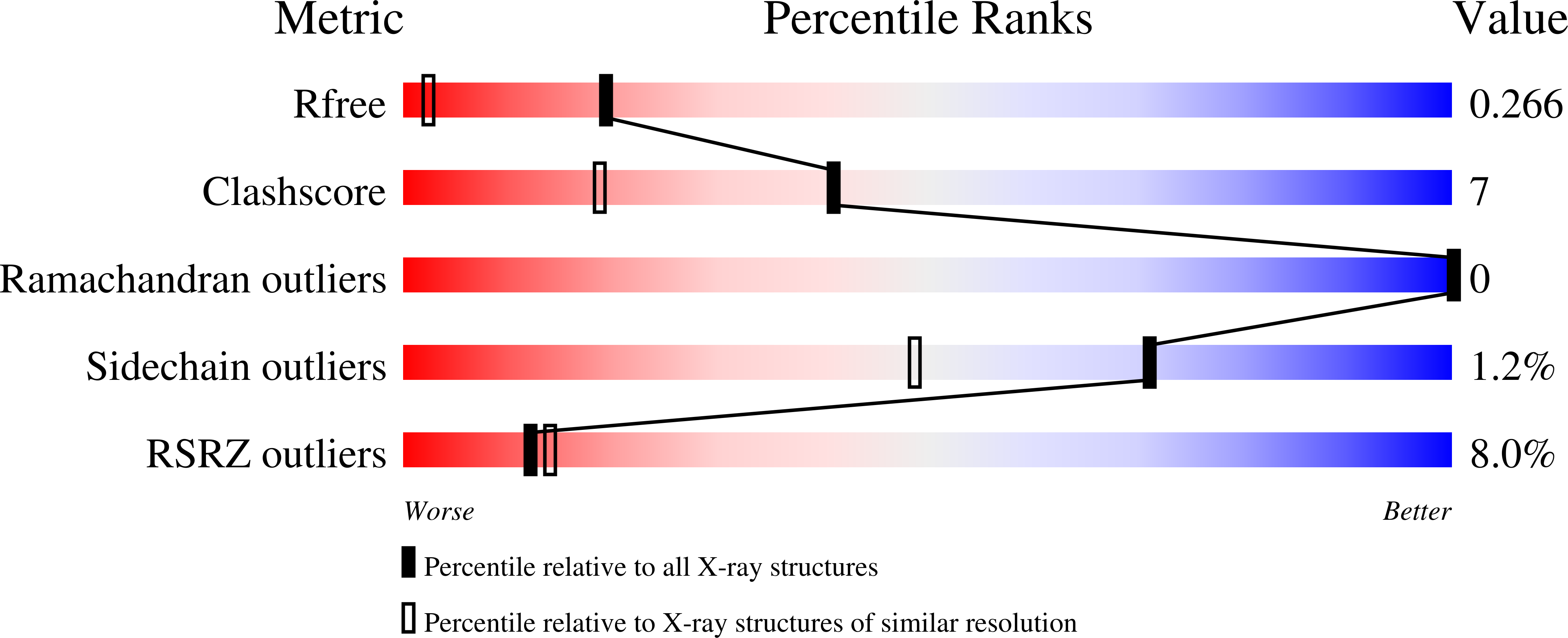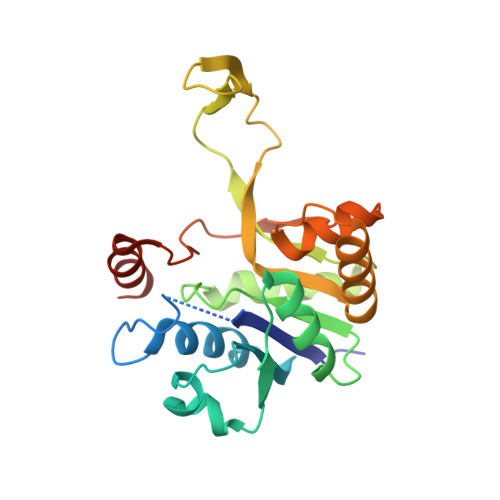Structure of 4-diphosphocytidyl-2-C- methylerythritol synthetase involved in mevalonate- independent isoprenoid biosynthesis.
Richard, S.B., Bowman, M.E., Kwiatkowski, W., Kang, I., Chow, C., Lillo, A.M., Cane, D.E., Noel, J.P.(2001) Nat Struct Biol 8: 641-648
- PubMed: 11427897
- DOI: https://doi.org/10.1038/89691
- Primary Citation of Related Structures:
1I52, 1INI, 1INJ - PubMed Abstract:
The YgbP protein of Escherichia coli encodes the enzyme 4-diphosphocytidyl-2-C-methylerythritol (CDP-ME) synthetase, a member of the cytidyltransferase family of enzymes. CDP-ME is an intermediate in the mevalonate-independent pathway for isoprenoid biosynthesis in a number of prokaryotic organisms, algae, the plant plastids and the malaria parasite. Because vertebrates synthesize isoprenoid precursors using a mevalonate pathway, CDP-ME synthetase and other enzymes of the mevalonate-independent pathway for isoprenoid production represent attractive targets for the structure-based design of selective antibacterial, herbicidal and antimalarial drugs. The high-resolution structures of E. coli CDP-ME synthetase in the apo form and complexed with both CTP-Mg2+ and CDP-ME-Mg2+ reveal the stereochemical principles underlying both substrate and product recognition as well as catalysis in CDP-ME synthetase. Moreover, these complexes represent the first experimental structures for any cytidyltransferase with both substrates and products bound.
Organizational Affiliation:
Structural Biology Laboratory, The Salk Institute for Biological Studies, 10010 North Torrey Pines Road, La Jolla, California 92037, USA.















